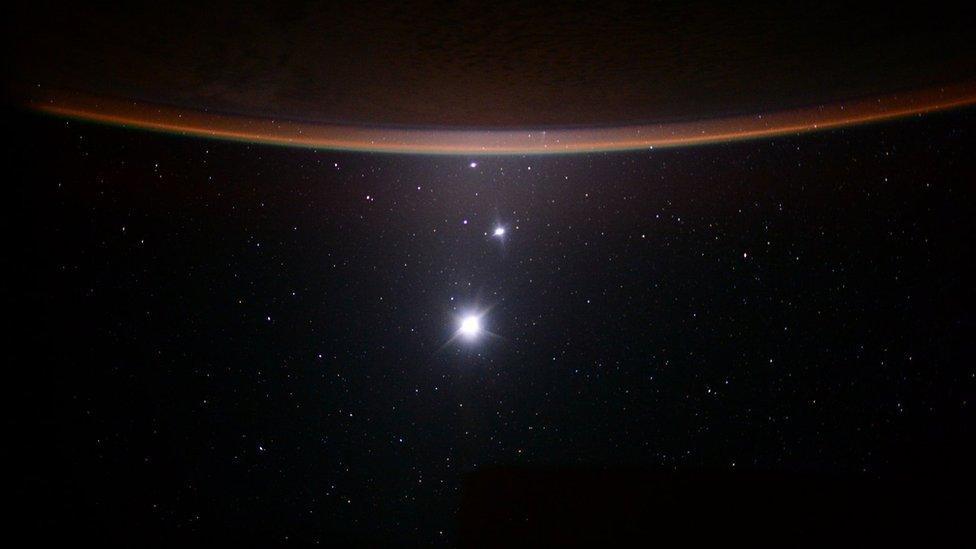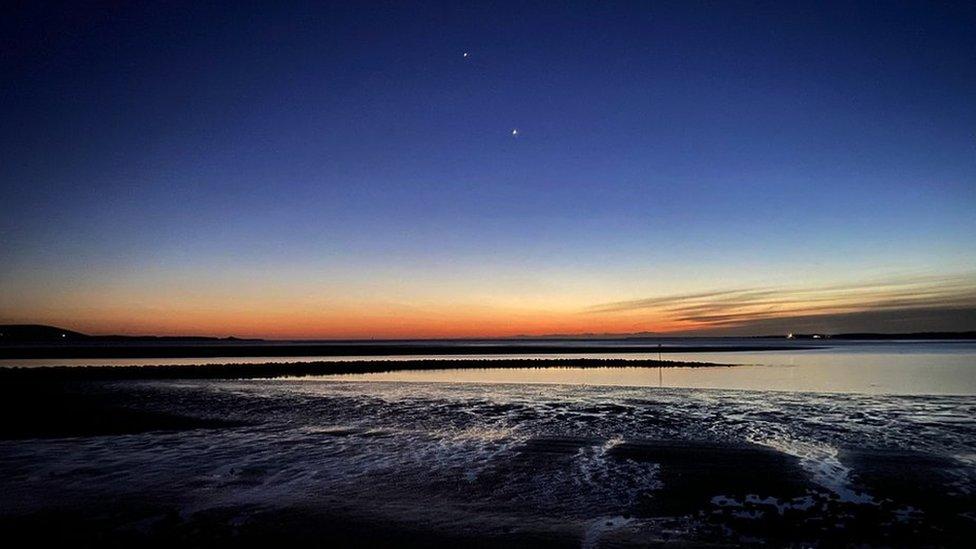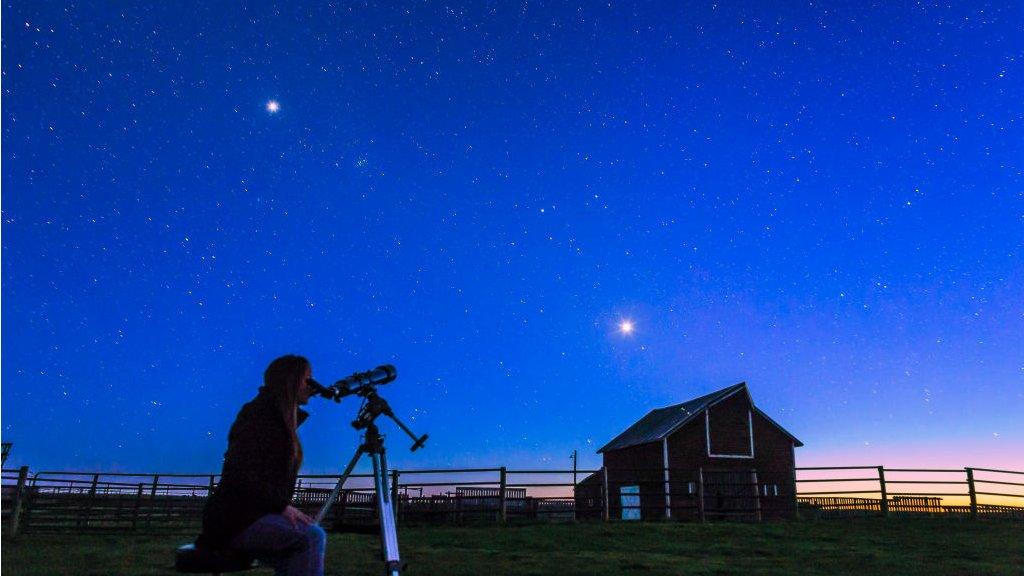Venus and Jupiter to create spectacle in the sky
- Published

Jupiter and Venus will appear extremely close, but they are still 400 million miles (600 million km) apart
The first night of meteorological spring will see Jupiter and Venus appear as if they are almost touching each other in the sky.
Wednesday's phenomenon is known as conjunction - when a planet appears close to a moon, star, or other planet.
The glare from Jupiter, the largest planet, and Venus, the brightest planet, will create a spectacular glow, according to Nasa.
Spectators will also be able to see four of Jupiter's brightest moons.
Over the past couple weeks the planets have been inching closer towards each other, but in reality they are still 400 million miles (600 million km) apart.
Conjunctions occur frequently in our solar system because "the planets orbit around the Sun in approximately the same plane - the ecliptic plane - and thus trace similar paths across our sky", according to Nasa.
So while these two planets converge often with "no profound astronomical significance", Nasa says, "they are nice to view".

Jupiter and Venus are inching closer towards each other and on 1 March will appear to almost touch one another
Onlookers from around the world can find the planets in the western sky typically after sunset depending, but check locally for specific times.
With clear skies, people should be able to see the conjunction with the naked eye, but binoculars or a telescope will enhance the view.
Because the planets will be low-lying on the horizon, finding a spot on a hill, void of tall buildings, will provide a better view.
- Published24 February 2023

- Published30 April 2022
